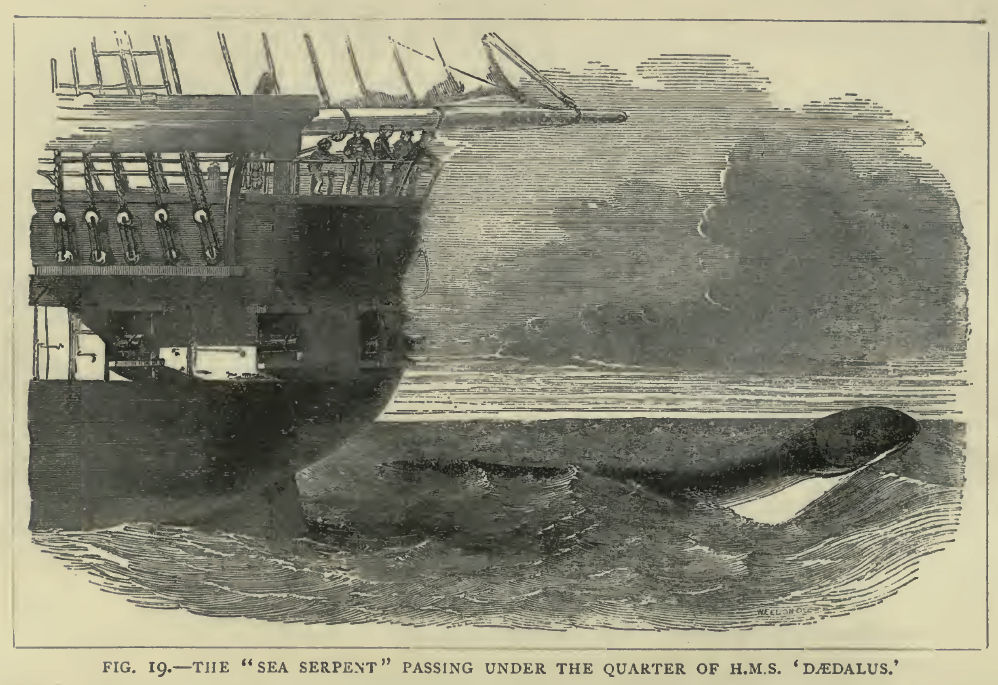It looks like you're using an Ad Blocker.
Please white-list or disable AboveTopSecret.com in your ad-blocking tool.
Thank you.
Some features of ATS will be disabled while you continue to use an ad-blocker.
3
share:
This is an intersting article from Forbes. The most intersting thing about this is that cryptozoology that we know today is basically the same from
200 years ago. Cientists back then tried to analise these reports and give their conclusions.
Original source
Original source
The British paleontologist Richard Owen is probably best known today for creating the word “dinosaurs” in 1841. But he was interested in more than just dinosaurs. He was also fascinated by the anatomy of many strange animals, such as marsupials, the giant Moa-birds from New Zealand and even sea monsters.Owen’s early years of education weren’t very promising. He completed a basic education, in which he was described as “lazy and rebellious.”
After only half a year at Edinburgh University, he left studies to practice as surgeon in various hospitals. He worked for a brief period as a doctor, but as skilled anatomist he soon was asked to reorganize the zoological collection of various museums.In his new role as a curator and organizer of exhibitions, he became very popular with the general public and a frequently requested expert on strange animals. He showed also an active personal interest in those topics. Between 1830 and 1870, Owen compiled a private booklet comprised of letters and newspaper clips regarding alleged sightings of sea serpents.
His view on those sea monsters became public in 1848, in response to one of the most spectacular and publicized sightings of a sea serpent in modern history.The October 14, 1848 edition of The Times published the report of an encounter with a sea serpent by Captain Peter M’Quahe and the crew of the ship HMS Daedalus. Just one month earlier the Daedalus had been sailing between the island of St. Helena and the Cape of Good Hope, when a crewmember noticed a strange shape in the open sea.
Captain M’Quhae provided a description of the encounter, which lasted between 5-20 minutes:The diameter of the serpent was about 15 or 16 inches behind the head, which was, without a doubt, that of a snake; … its color a dark brown, with yellowish white about the throat. It had no fins, but something like a mane of a horse, or rather a bunch of seaweed, washed about its back. It was seen by the quartermaster, the boatswain’s mate, and the man at the wheel, in addition to myself and officers above mentioned.The story became very popular after first appearing in the famous gossip magazine The Illustrated London News, particularly due the illustrations of the animal based on Captain M ‘Quahe’s description.The sighting of “HMS Daedalus”, one of the three illustrations published in 1848 by “The Illustrated London News”.
The real nature of the sighting of the Daedalus is still unknown; however, the famous figure of the sea serpent is based more on the artist’s imagination than on verifiable facts. (Image from LEE, H. (1883) “Sea monsters unmasked”)The November 14, 1848 edition of The Times published a response to this account from Richard Owen, which was later reprinted by various newspapers:As it contains the substance of the explanation I have endeavored to give to numerous inquirers, in the Hunterian Museum and elsewhere, and as I continue to receive many applications for my opinion of the “Great Sea Serpent”, I am desirous to give it once for all through the medium of your columns, if space of such value may be allotted to it.
Owen starts cautiously, arguing that the description and representation of the monster excludes a reptile, especially considering the description of the “horse-like” head.I am far from insensible to the pleasures of the discovery of a new and rare animal; but before I can enjoy them, certain conditions – e.g., reasonable proof or evidence of its existence – must be fulfilled.Owen concluded that the creature was a mammal, probably a large seal, that had simply been misidentified by the crew of the Daedalus.Owens main argument was based on the lack of physical evidence of any supposed sea monster.
For example, no bones of such a creature had ever been sent to a museum or been found in a collection.A larger body of evidence from eye-witnesses might be got together in proof of ghosts than of the sea serpent.Just fifty years earlier, bones of prehistoric animals were widely regarded as proof of myths and human giants. Owen, however, was convinced that modern scientific disciplines like zoology and paleontology should only be based on real evidence that has been collected, stored and analyzed in a museum, rather than on stories.To achieve this goal, he became one of the minds behind the Natural History Museum in London. Ironically, there are some sea serpents on display there today – only those marine reptiles went extinct some 65 million years ago. Humans never encountered them alive in the sea. Merely as fossils dug up from the ground.
new topics
-
No, the election results aren't reminiscent of 1930s Germany. But this is.
US Political Madness: 1 hours ago -
Agree or Disagree
2024 Elections: 2 hours ago -
Leaving the US due to severe TDS?
US Political Madness: 3 hours ago
3


